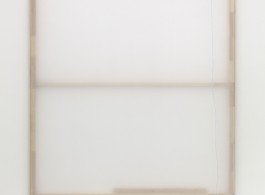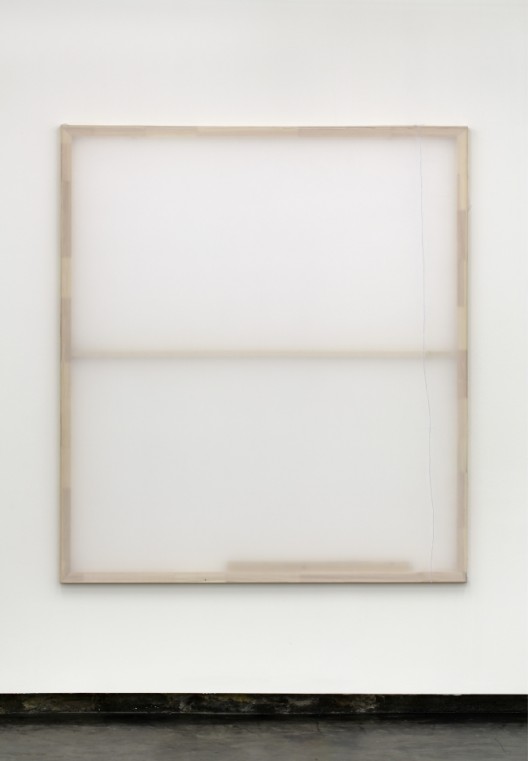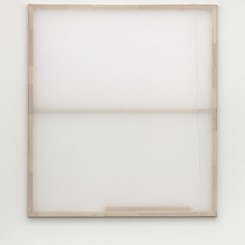A painting knows what it wants to be.
Axel Vervoordt Gallery is proud to present Jaromir Novotny’s first solo show in our Hong Kong location. The exhibition of recent works is titled, “Look Again”, and is a literal and figurative invitation for visitors to contemplate the very nature of paintings as both an object and a creative act.
Jaromir Novotny is a restless searcher with a never-ending quest to explore the possibilities and limits of painting. The early works of Novotny are inspired by architecture. They are introverted and rather dark. Since 2011, he has shown a particular interest in different shades of black. Then in 2014, he began limiting himself to the use of black and white. He began to paint on canvases hung freely on the wall without stretchers. A short while later, he started his exploration of painting on synthetic organza, and since then his works have become much lighter.
Traces of execution are transparent in the paintings. The use of water and paint, the presence of additional materials underneath the organza, the stitched parts of the fabric, as well as the visible stretcher—all of these components contribute to and challenge every aspect of transparency. Synthetic organza came into place while Novotny was looking for a transparent textile instead of a canvas. Organza gives white a different dimension in that it transcends the material and makes it “more white”.
At first, sewing was a technical requirement. Working within the dimensional constraints of commercially produced organza, Novotny had to sew the fabrics together if he wanted to create a larger piece. However, placing things behind the fabric is just another way of painting, hence the visible stretcher and materials offer a kind of side effect in his work. An underlying effect was the artist’s pursuit to develop monochrome in a deeper way. From Novotny’s perspective, if the painted surface of a monochrome work is already minimal, perhaps changing the supports for painting can make significant progress and make the process more interesting.
Novotny makes sparing use of colours, because vivid colours easily cause immediate emotional associations. Shades of white, with its inherent wide-ranging associations and symbols, also relate to mindfulness in a way that leads the viewer to pay attention to the delicate texture, the thin lines and the imperfections of the paintings. White—or close to white—is an achromatic color, a color without a hue, yet one that contains all colors. This is a symbol of the work’s poetry—a presence holds an absence.
Novotny maintains an awareness of the painting as an object. He attempts to make the medium of paintings visible, as if they originated organically through their own nature without the artist’s effort. He considers the work’s physical verticality in form and composition, as well as the scale of 1:1 between the human body and the painting itself, to be constant parameters of a default setting with respect to the viewer. In this sense, the paintings become like a window, transparent and equal to the size of the human figure which stands before it.
The paintings reveal their essential properties, crossing over the boundaries of visibility. The white transparency appears to limit the range of colours that may be derived. The surface of the painting appears to be just detaching itself from the uppermost layer of the canvas, as though it were a type of initial motif, which nearly blends the surface and format of painting as an object itself. It’s a narrowly delimited “phase” of minimal transformations of colours and composition that give rise to an important functional aspect of the work—to make the medium of art visible.
By doing what the painting wants, Novotny’s practice does not offer a straightforward critique of the abstraction of Minimalism or any movements in the way that some artists felt driven to respond to the rigidity of high Modernism and Postmodernism. Yet there are indeed connections with the art movements rooted in Novotny’s cultural background. He perceives them in a rather emotionally organic way. “I am not a conscious follower, at least not consciously, of any modernist theory or utopia,” said Novotny. By dislocating and reforming elements of the process, the result is a hybrid that recalls the origin of the work itself.



